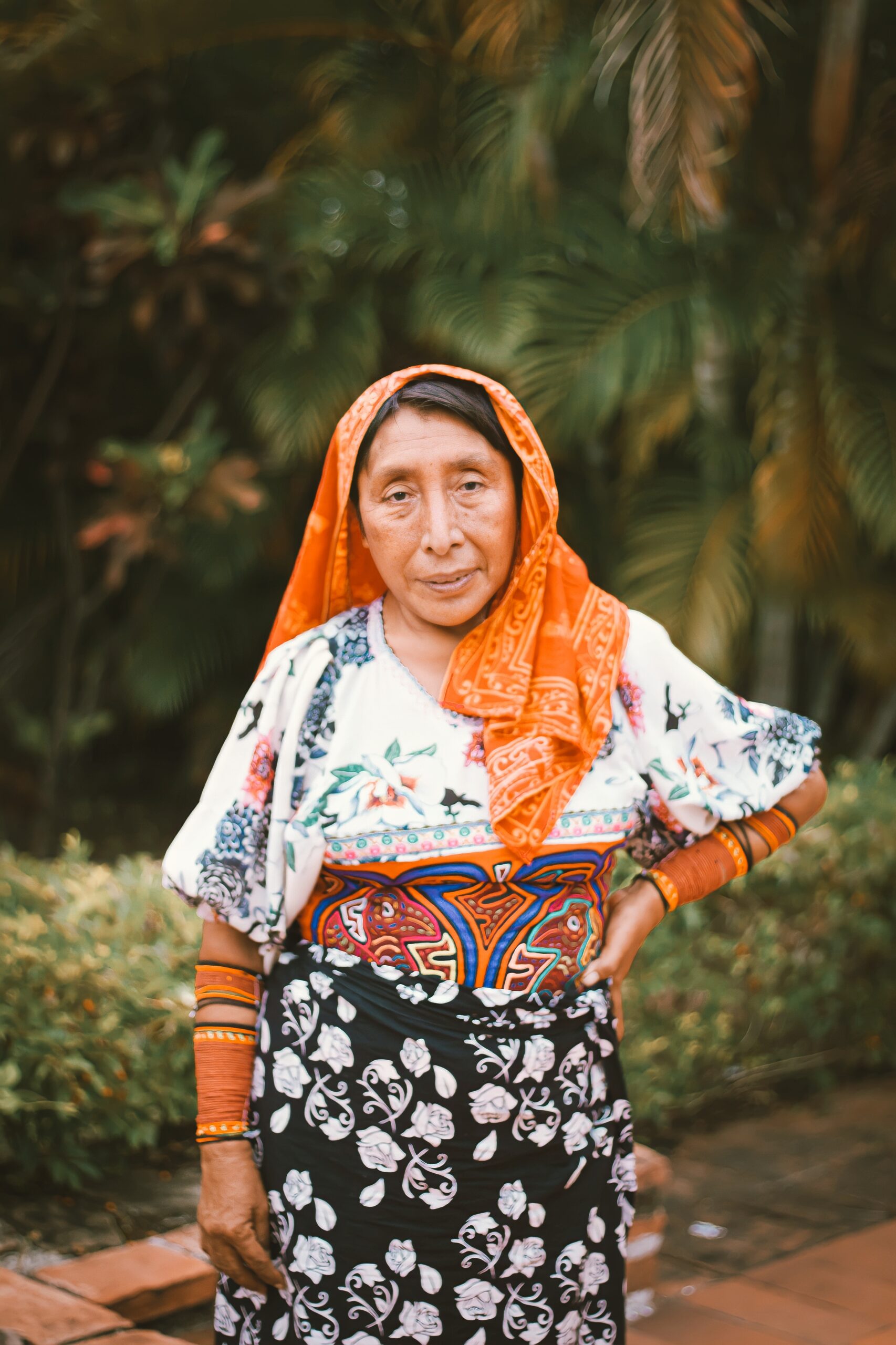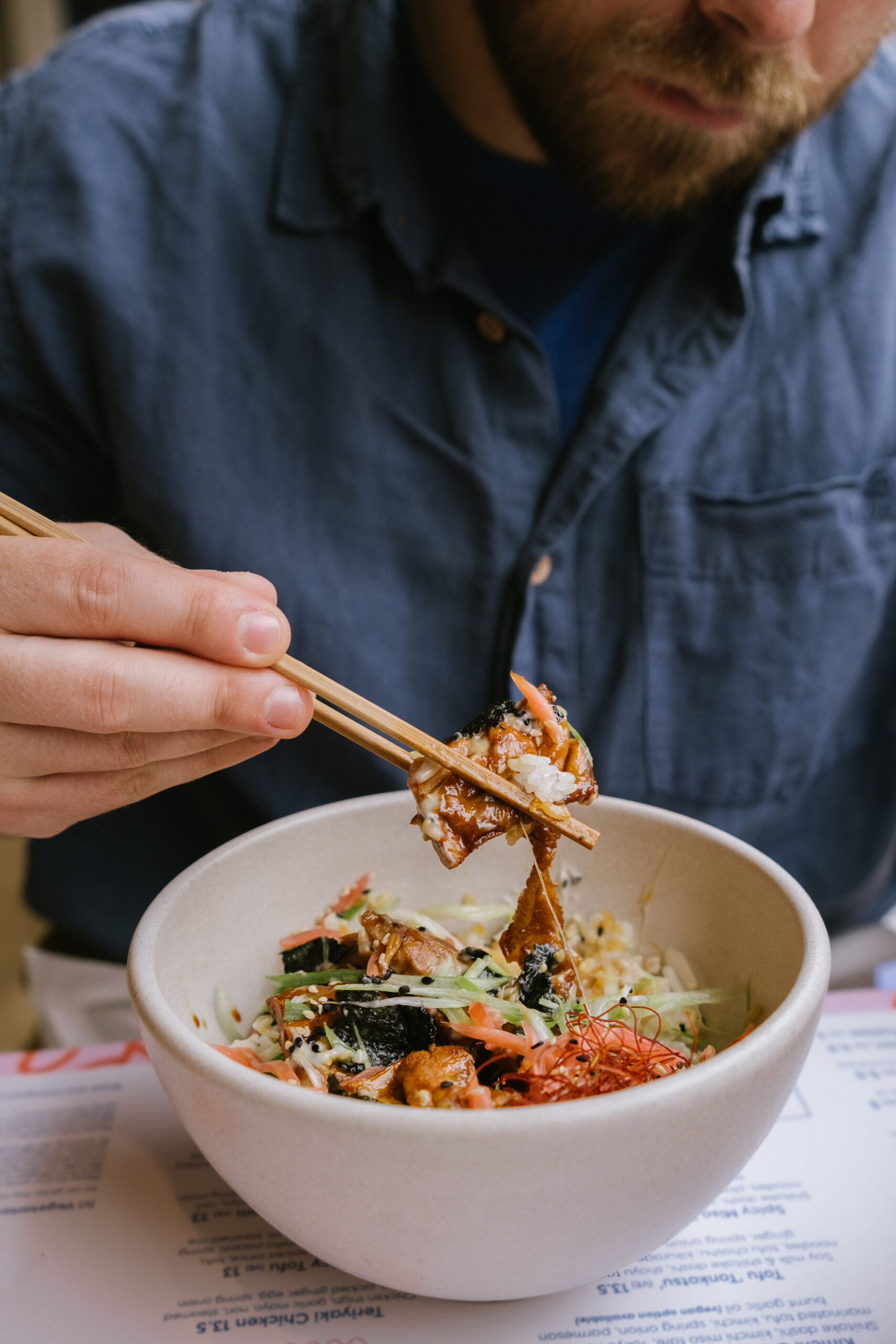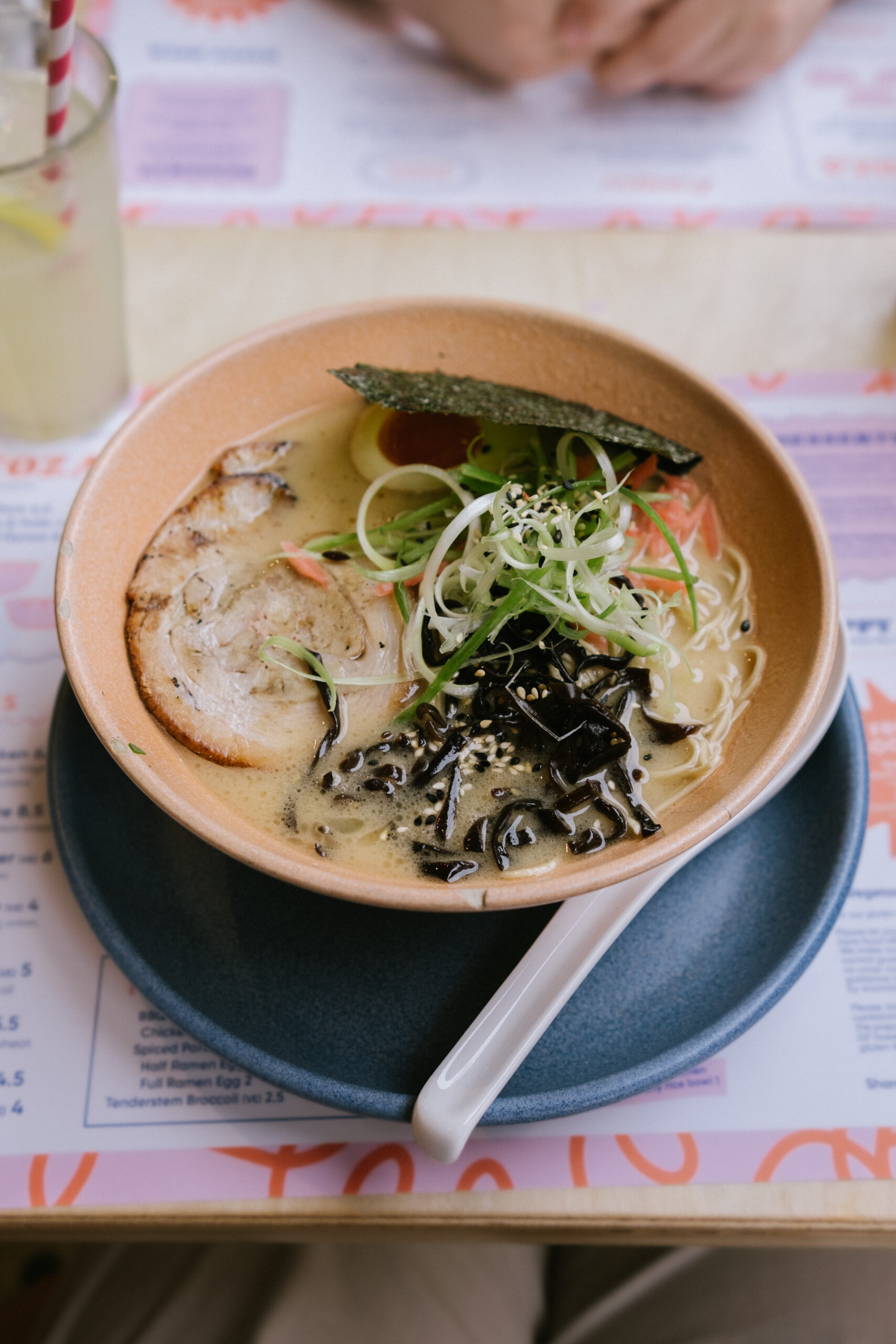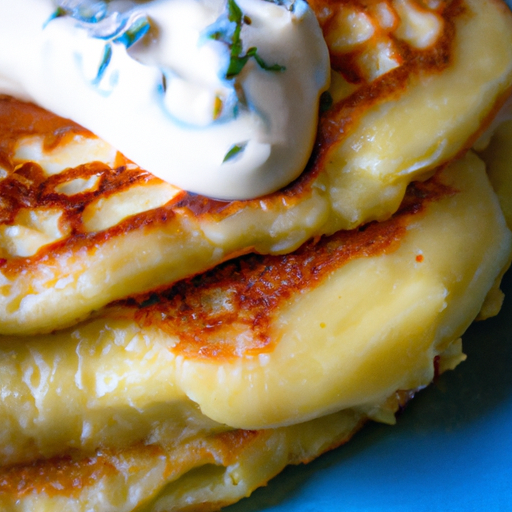Step into the world of Russian cuisine as we take you on a flavorful journey through the culinary heritage of Russia. From the iconic beet soup, borscht, to the fluffy pancakes known as blini, get ready to indulge in the vibrant flavors and rich traditions that make Russian cuisine truly unique. Whether you’re a seasoned food enthusiast or just starting to explore different global cuisines, this article will transport you to the heart of Russia’s gastronomic culture, leaving you craving for more. So, grab a seat at the table and get ready to satisfy your taste buds with the diverse and delicious dishes of Russia.

History of Russian Cuisine
Russian cuisine has a rich and intriguing history that reflects the diverse influences it has received over the centuries. The merging of Eastern European and Asian cuisines has shaped the unique flavors and techniques found in traditional Russian dishes. From hearty soups to savory pastries, Russian cuisine has something to offer for every palate.
Influence of Eastern European and Asian cuisines
The geographical location of Russia has greatly influenced its culinary traditions. Being situated between Eastern Europe and Asia, Russian cuisine has absorbed elements from both regions. The Mongols, who ruled over Russia for centuries, introduced the Russians to the concept of using spices and herbs to enhance the flavors of their dishes. Additionally, the trade routes between Europe and Asia introduced new ingredients such as rice, spices, and exotic fruits, which found their way into Russian kitchens.
Traditional ingredients and cooking techniques
The foundation of Russian cuisine lies in its traditional ingredients and cooking techniques. An abundance of vegetables, grains, and dairy products are used in Russian cooking. Potatoes, cabbage, carrots, onions, and beets are staples in many Russian dishes. Techniques such as pickling, fermenting, and slow cooking are commonly used to preserve food and develop complex flavors.
Evolution of Russian culinary traditions
Russian culinary traditions have evolved over time, influenced by historical events, cultural exchanges, and changing trends. In the early days, Russian cuisine was primarily simple and based on basic ingredients readily available in the region. However, over the centuries, Russian cuisine has become more diverse and sophisticated, reflecting the influence of different cultures and the availability of new ingredients. Today, Russian cuisine encompasses a wide range of dishes, from traditional classics to modern innovations.
The Classic Russian Dishes
Russian cuisine is renowned for its hearty and flavorful dishes that have stood the test of time. Here are some of the classic Russian dishes that have become icons of the country’s culinary heritage:
Borscht: The Iconic Beet Soup
Borscht is perhaps the most famous Russian soup, known for its vibrant red color and rich flavors. Made with beets, cabbage, potatoes, and sometimes meat, borscht is a hearty and nourishing dish that is often served with a dollop of sour cream. Each region in Russia has its own variation of borscht, but regardless of the recipe, it remains a beloved and iconic symbol of Russian cuisine.
Pirozhki: Savory Stuffed Pastries
Pirozhki are small, savory pastries filled with a variety of fillings such as meat, vegetables, or cheese. These handheld treats are enjoyed as a snack or appetizer and are a popular street food in Russia. Pirozhki can be baked or fried, and their dough can be made with yeast or shortcrust pastry. Whether enjoyed as a quick bite or part of a full meal, pirozhki are a delicious and versatile dish loved by many Russians.
Pelmeni: Russian Dumplings
Pelmeni are small, savory dumplings made with a simple dough and filled with a mixture of minced meat, usually beef or pork. These dumplings are boiled and typically served with butter, sour cream, or vinegar. Pelmeni have been a staple of Russian cuisine for centuries and are often served during special occasions or holidays. Their simplicity and comforting flavors make them a beloved dish in Russia.
Shchi: Nourishing Cabbage Soup
Shchi is a traditional Russian soup made with cabbage as the main ingredient. Often cooked with meat, such as beef or pork, shchi is a nourishing and hearty soup that is particularly popular during the cold winter months. This flavorful dish is often served with sour cream and is a comfort food for many Russians.
Golubtsy: Cabbage Rolls with Meat and Rice
Golubtsy, also known as stuffed cabbage rolls, are a classic Russian dish that combines cabbage with a flavorful filling of ground meat and rice. The cabbage leaves are stuffed with the filling, then simmered in a tomato-based sauce until tender. This hearty and savory dish is often enjoyed as a main course and pairs well with sour cream.
Chicken Kiev: Juicy Stuffed Chicken
Chicken Kiev is a classic Russian dish that has gained popularity around the world. It consists of a chicken breast pounded flat, filled with seasoned butter, then rolled and breaded before being fried until golden and crispy. When sliced open, the chicken oozes with the melted butter, creating a juicy and flavorful dish. Chicken Kiev is often served with mashed potatoes or a fresh salad.
Beef Stroganoff: Creamy Meat Dish
Beef Stroganoff is a timeless Russian dish that has become a staple of international cuisine. Thin strips of tender beef are cooked in a rich sauce made with onions, mushrooms, and sour cream, resulting in a creamy and flavorful meat dish. Traditionally served over rice or pasta, Beef Stroganoff is a comforting and satisfying meal that is sure to please.
Olivier Salad: Festive Russian Potato Salad
Olivier Salad, also known as Russian Salad, is a staple dish on Russian tables during holidays and celebrations. This creamy and vibrant salad is made with potatoes, carrots, pickles, peas, and ham or chicken, all dressed in mayonnaise. Olivier Salad is a festive and flavorful addition to any meal, and its popularity has spread beyond Russia’s borders.
Caviar: Russian Delicacy
Caviar is a delicacy that is deeply intertwined with Russian cuisine. Often associated with luxury and indulgence, caviar is the processed eggs of sturgeons and is prized for its delicate flavor and texture. Russian caviar, particularly the varieties from the Caspian and Black Seas, is highly sought after and enjoyed around the world. Whether enjoyed on its own or as a topping for blini, caviar is a symbol of sophistication and craftsmanship.
Blini: Thin Pancakes with Various Fillings
Blini are thin pancakes that are a beloved part of Russian cuisine. Made with a yeasted batter, blini are light and delicate, perfect for wrapping around a variety of sweet or savory fillings. Traditional fillings include caviar, sour cream, smoked salmon, or preserved fruits. Blini are enjoyed on special occasions such as Maslenitsa, and they are an essential part of Russian culinary traditions.

Regional Variations in Russian Cuisine
Russia’s vast and diverse landscape has given rise to a variety of regional cuisines, each with its own distinct flavors and specialties. Here are some of the regional variations in Russian cuisine:
Northern Cuisine: Fish and Mushroom Specialties
The northern regions of Russia, such as Karelia and Murmansk, are known for their abundant freshwater and sea fish. Smoked and salted fish, such as salmon and herring, are common ingredients in northern cuisine. Mushroom foraging is also popular in these regions, and mushrooms play a prominent role in many dishes.
Volga Cuisine: Fish Soups and River Crustaceans
The Volga River, the longest river in Europe, has shaped the cuisine of the regions it passes through. Fish soups, such as ukha, made with freshwater fish such as bream and pike, are popular in Volga cuisine. River crustaceans, like crayfish, are often featured in festive meals and celebrations.
Siberian Cuisine: Hearty Meat and Potato Dishes
Siberian cuisine, influenced by the harsh winters and nomadic traditions of the region, is known for its hearty and filling dishes. Game meats, such as venison and wild boar, are commonly used, along with potatoes and root vegetables. Dumplings, similar to pelmeni, are also popular in Siberian cuisine.
Caucasian Cuisine: Flavorful Spices and Grilled Meats
Caucasian cuisine, which encompasses the region between the Black Sea and the Caspian Sea, is characterized by its bold flavors and vibrant spices. Grilled meats, such as shish kebabs, are popular, as are dishes like khachapuri, a cheese-filled bread. The use of herbs and spices, such as cilantro and saffron, creates a unique and aromatic culinary experience.
Crimean Cuisine: Tatar Influences and Fresh Seafood
The Crimean Peninsula, with its rich history and diverse influences, boasts a cuisine that combines elements of Turkish, Tatar, and Russian traditions. Fresh seafood, including mussels and sturgeon, is a highlight of Crimean cuisine. Tatar influences can be seen in dishes such as chebureki, a fried turnover filled with meat or potatoes.
The Art of Russian Tea
Tea holds a special place in Russian culture, with a long history of tea-drinking rituals and traditions. The art of Russian tea is as much about the experience as it is about the beverage itself.
Traditional tea-drinking rituals
Tea-drinking in Russia is a social affair, often accompanied by lively conversation and hospitality. Guests are typically offered a variety of teas to choose from, such as black, herbal, or fruit teas. The host serves the tea using a traditional tea set, and it is customary to add sugar, lemon, or honey to taste.
Samovar: The Russian Tea Urn
A samovar is a centerpiece of Russian tea-drinking rituals. This traditional Russian tea urn consists of a large metal container filled with hot water on the bottom, with a smaller teapot on top. The hot water stays warm throughout the tea-drinking session, allowing guests to continuously refill their cups.
Tea accompaniments: Preserves and Cookies
Russian tea is often served with a selection of sweet accompaniments, such as preserves and cookies. Fruit preserves, such as raspberry or apricot jam, are commonly used to add sweetness to the tea. Traditional Russian tea cookies, such as pryaniki or shortbread biscuits, are also enjoyed alongside the tea.

Russian Food Traditions and Celebrations
Russian food traditions play a significant role in celebrations and cultural events throughout the year. These traditions showcase the importance of food in Russian culture and provide an opportunity for families and friends to come together.
Maslenitsa: The Pancake Festival
Maslenitsa, also known as Pancake Week, is a lively festival celebrated in Russia to bid farewell to winter and welcome the arrival of spring. The highlight of Maslenitsa is the abundance of blini, or thin pancakes, that are consumed throughout the week. These pancakes are traditionally enjoyed with fillings such as sour cream, caviar, and butter.
Easter Traditions: Kulich and Paskha
Easter is an important religious holiday in Russia, and it is celebrated with a variety of traditional foods. One of the most iconic Easter treats is kulich, a tall, cylindrical sweet bread that is usually iced and decorated. Paskha, a rich and creamy cheese dessert, is also commonly enjoyed during Easter celebrations.
Christmas Eve: The Festive Twelve-Course Meal
Christmas Eve in Russia is a time for a grand feast known as the “Holy Supper.” This twelve-course meal consists of a variety of dishes, each with its own symbolic meaning. Traditional dishes include kutya, a sweet grain dish, and stuffed cabbage rolls. The Holy Supper is a time for families to come together and celebrate the birth of Christ.
Feasts and Banquets: Toasts and Vodka
Russian feasts and banquets are known for their abundance of food and drink. Toasts, known as “Za zdorovye!” or “To your health!,” are an integral part of these celebrations. Vodka, the iconic Russian spirit, is often enjoyed in moderation during these festive occasions, along with a wide array of traditional dishes.
Russian Sweets and Desserts
Russian cuisine is not just about hearty main courses; it also boasts a delectable selection of sweets and desserts that are a delight to the taste buds.
Medovik: Layered Honey Cake
Medovik, also known as the honey cake, is a classic Russian dessert that is beloved for its luscious layers of soft cake and sweet honey frosting. Each layer of the cake is lightly baked to achieve a tender texture and generously coated with a creamy combination of honey, condensed milk, and butter. This indulgent dessert is sure to satisfy any sweet tooth.
Ptichye Moloko: Creamy Marshmallow Dessert
Ptichye Moloko, meaning “bird’s milk,” is a heavenly dessert consisting of a delicate layer of sponge cake topped with a light and airy marshmallow-like cream. The cream is made by whipping egg whites, sugar, and boiled condensed milk to create a soft and velvety texture. Ptichye Moloko is often coated with chocolate, adding a delightful contrast to its creamy interior.
Prjaniki: Spiced Honey Cookies
Prjaniki are spiced honey cookies that have been enjoyed in Russia for centuries. Made with a combination of honey, spices, and sometimes molasses, these cookies have a fragrant aroma and a slightly chewy texture. Prjaniki are commonly shaped into various forms, such as hearts or animals, and are often decorated with icing.
Kisel: Fruit Jelly Dessert
Kisel is a traditional Russian fruit jelly dessert that is enjoyed both warm and cold. Made from a thickened fruit juice or puree, kisel has a smooth and silky texture. It can be flavored with a variety of fruits such as cranberries, cherries, or apples. Kisel is often served as a light and refreshing dessert or as a welcome treat for children.
Zefir: Fluffy Fruit Marshmallow
Zefir is a light and fluffy marshmallow-like dessert that is often enjoyed with tea. Made from a mixture of fruit puree, sugar, and whipped egg whites, zefir has a delicate and airy texture. It is commonly shaped into small domes or cylinders and dusted with powdered sugar. This delightful treat comes in a variety of flavors such as strawberry, raspberry, or lemon.
Influence of Russian Cuisine on the World
Russian cuisine has had a significant impact on the culinary world, with its distinct flavors and dishes finding their way into international cuisines.
Russian Restaurants Abroad
Russian cuisine has gained popularity outside of Russia, with Russian restaurants popping up in various countries around the world. These restaurants offer authentic Russian dishes, allowing people to experience the flavors and traditions of Russian cuisine without leaving their home countries. The popularity of Russian restaurants abroad is a testament to the appeal and recognition of Russian food.
Vodka: Iconic Russian Spirit
Vodka has become synonymous with Russian culture and is widely consumed not only in Russia but also around the world. Its simplicity and versatility have made it a popular choice for cocktails and shots. The impact of vodka on the global drinks scene is undeniable, and it has become an iconic Russian spirit that is recognized and enjoyed worldwide.
Russian Cuisine in Literature and Art
Russian cuisine has made its way into literature and art, becoming an integral part of cultural expressions. Russian authors and poets have described the flavors and aromas of traditional dishes in their works, adding depth and richness to their storytelling. Paintings and illustrations often depict scenes of feasts and banquets, showcasing the importance of food in Russian culture.
Russian Food in Pop Culture
Russian dishes and ingredients have found their way into popular culture, appearing in movies, TV shows, and even video games. The iconic image of a Russian feast, complete with blini, caviar, and vodka, has become a recognizable symbol of Russian culture. These appearances in pop culture have further spread awareness and interest in Russian cuisine.
Preserving Russian Culinary Heritage
Preserving Russian culinary heritage is essential to ensure that the unique flavors and traditions of Russian cuisine are passed down through generations.
Folklore and Cookbook Preservation
Folklore and oral traditions play a crucial role in preserving Russian culinary heritage. Passed down from generation to generation through stories and family recipes, these traditions ensure that the knowledge of traditional dishes and cooking techniques is not lost.
Cookbooks also play a vital role in preserving Russian culinary heritage. These books collect and document traditional recipes, providing a valuable resource for future generations. Many modern cookbooks focus on reviving ancient recipes and showcasing the cultural significance of Russian cuisine.
Reviving Ancient Recipes
Reviving ancient recipes is a way to honor and celebrate Russian culinary heritage. By researching and adapting historical recipes, chefs and home cooks can bring these traditional dishes back to life. The revival of ancient recipes allows for a deeper understanding of Russian culinary traditions and provides an opportunity to experience the flavors and techniques of the past.
Culinary Festivals and Competitions
Culinary festivals and competitions provide a platform for showcasing Russian culinary heritage and promoting traditional dishes. These events bring together chefs, home cooks, and food enthusiasts to celebrate and share their passion for Russian cuisine. By participating in these festivals and competitions, individuals contribute to the preservation and appreciation of Russian culinary heritage.
Modern Innovations in Russian Cuisine
While traditional Russian dishes remain beloved and cherished, modern innovations in Russian cuisine are pushing boundaries and creating new culinary experiences.
New Techniques and Ingredients
Modern Russian chefs are experimenting with new techniques and ingredients to create innovative dishes that showcase the diversity of Russian cuisine. For example, sous vide cooking, a method that involves sealing ingredients in a vacuum-sealed bag and cooking them in a water bath at a precise temperature, is being adopted by Russian chefs to enhance the flavors and textures of their dishes.
Ingredients from around the world are also finding their way into modern Russian cuisine. Chefs are incorporating exotic spices, herbs, and unique ingredients into traditional recipes, creating fusion dishes that blend Russian flavors with international influences.
Haute Russian Cuisine: Fusion and Modernization
Haute Russian cuisine, also known as modern Russian cuisine, is a movement that focuses on elevating traditional dishes to new heights. Chefs are reinventing classic Russian recipes, combining modern gastronomic techniques with traditional flavors. This fusion of old and new creates visually stunning and technically impressive dishes that showcase the evolution of Russian cuisine.
Russian Celebrity Chefs
The rise of Russian celebrity chefs has brought attention to the innovation and creativity happening in the Russian culinary scene. These chefs, with their unique styles and approaches to cooking, are putting Russian cuisine on the global map. Through their restaurants, cookbooks, and television shows, they are inspiring a new generation of cooks and bringing Russian cuisine to a wider audience.
Conclusion
Russian cuisine is a reflection of the nation’s rich history, diverse influences, and cultural traditions. From the iconic beet soup, borscht, to the delicate layers of a honey cake, Russian dishes have captivated taste buds around the world. With its regional variations, unique tea-drinking rituals, and traditional celebrations, Russian cuisine offers a wealth of flavors and experiences that continue to evolve and inspire. By preserving and innovating on traditional recipes, Russian culinary heritage remains a vibrant and integral part of global food culture.

